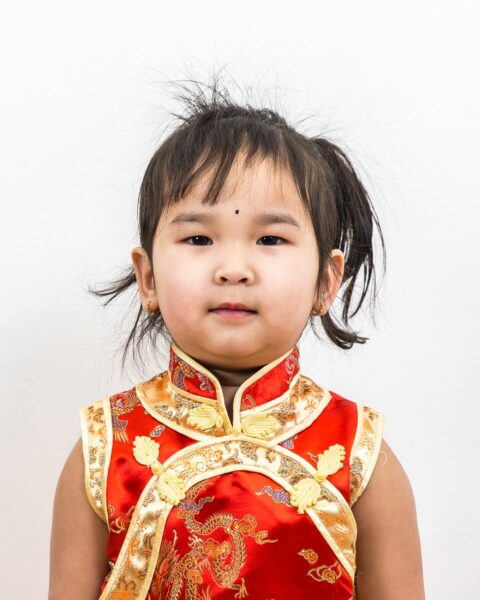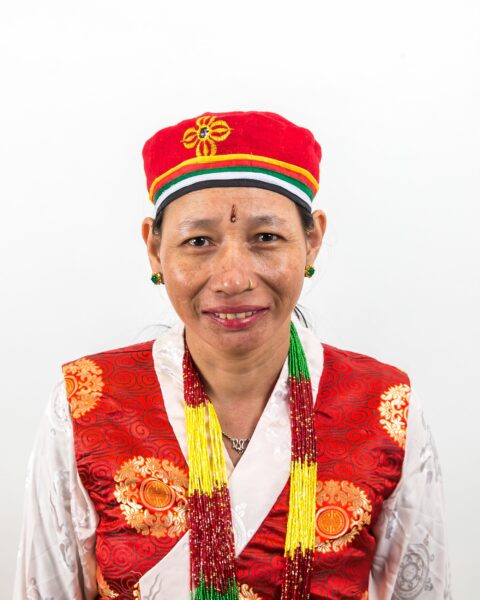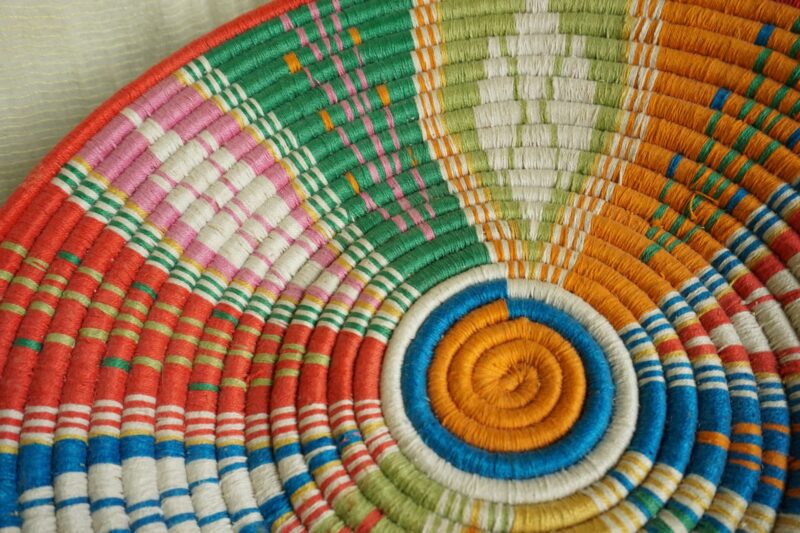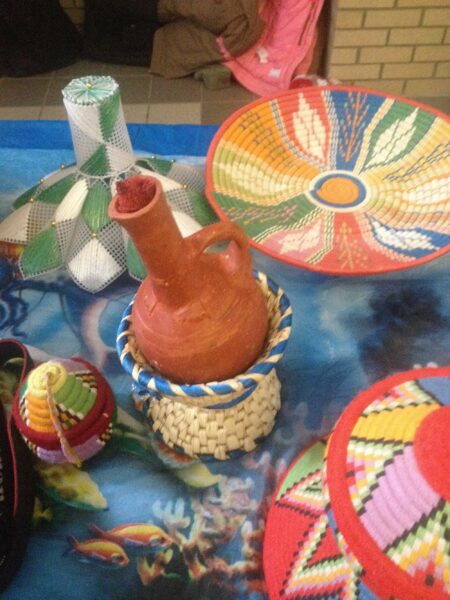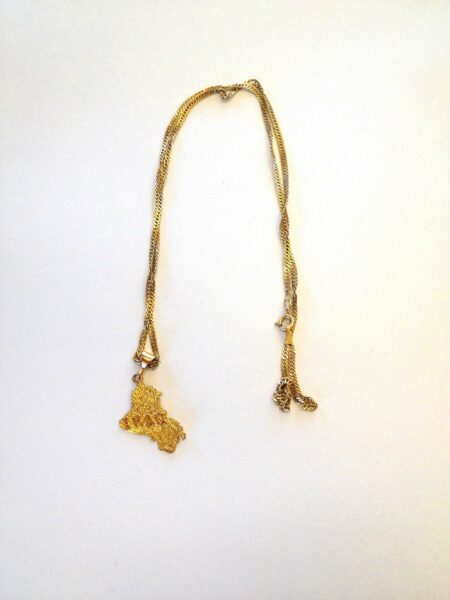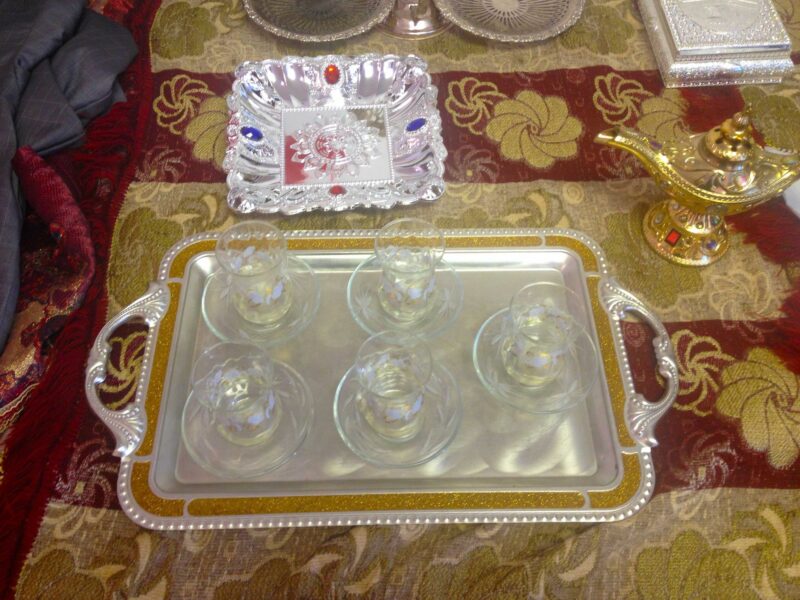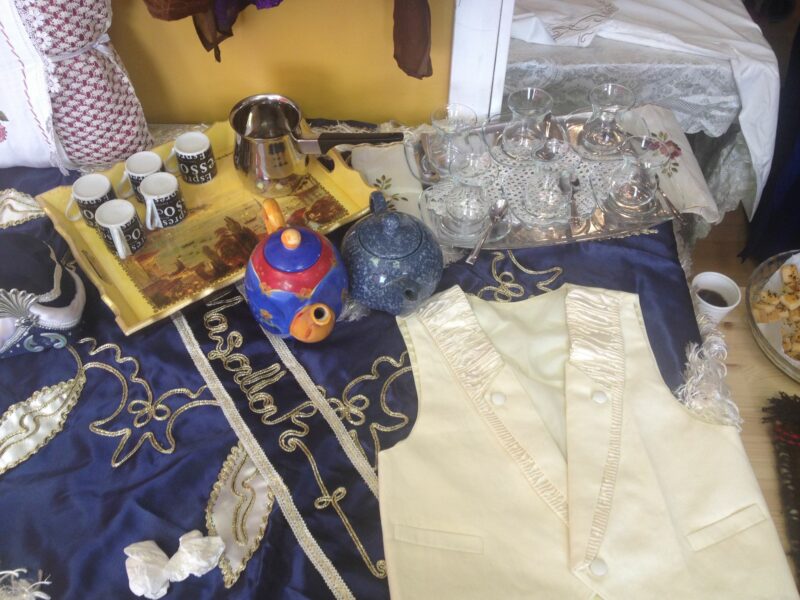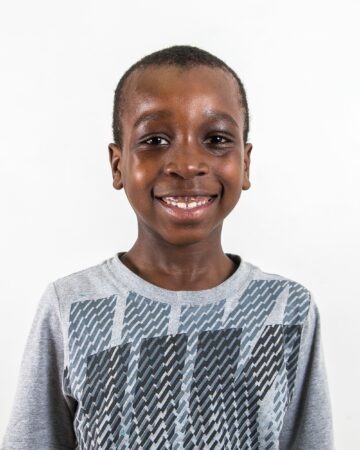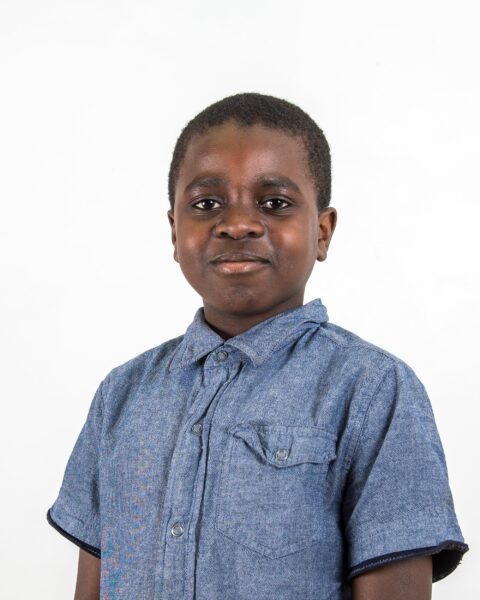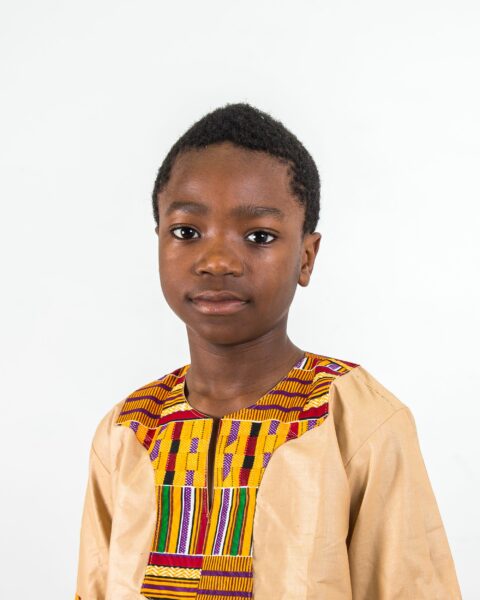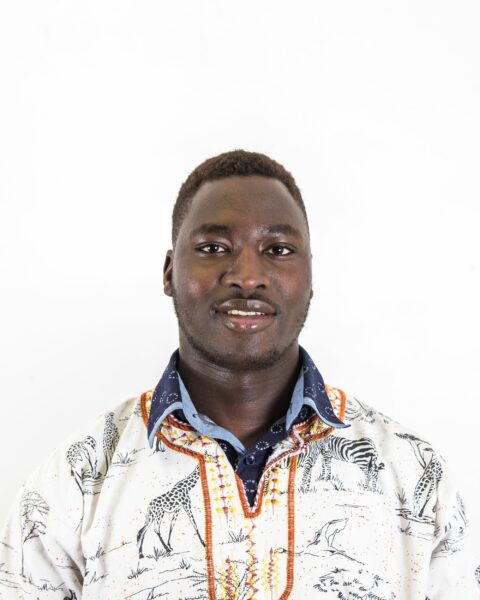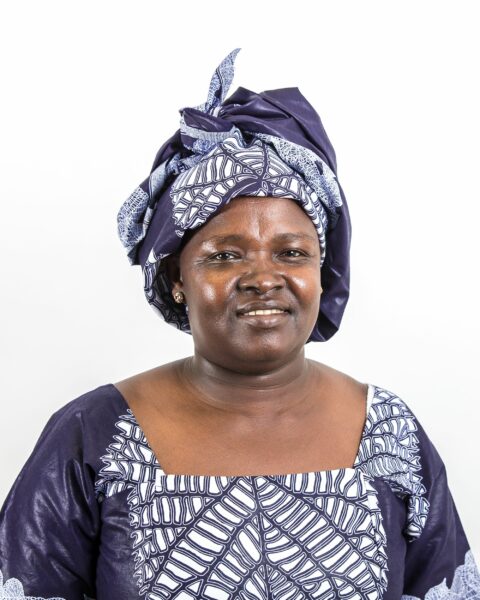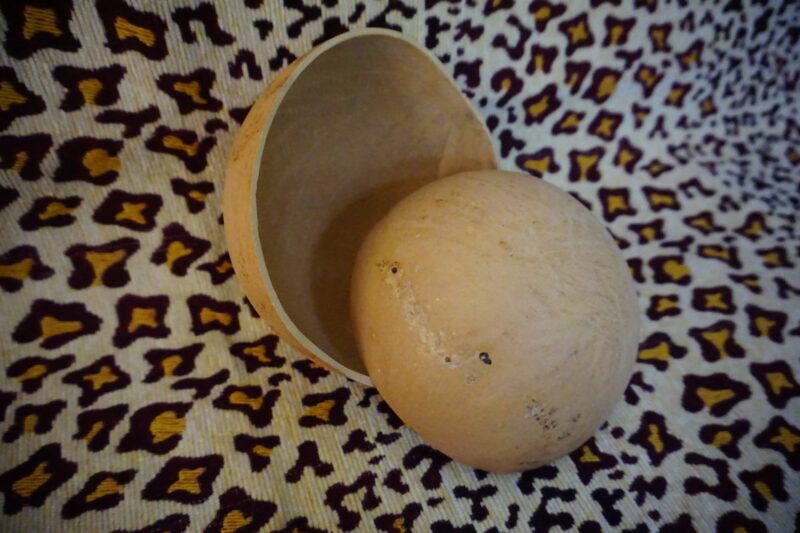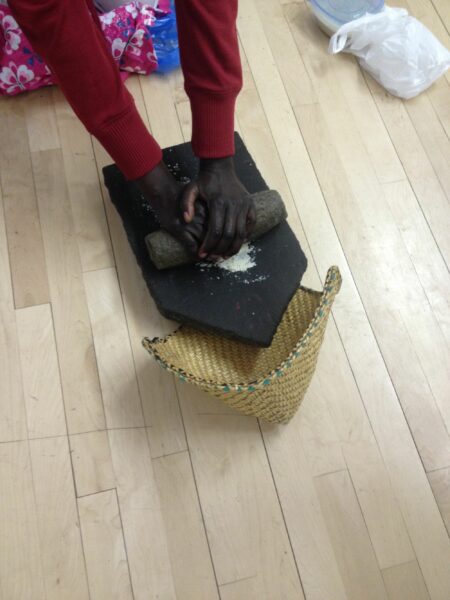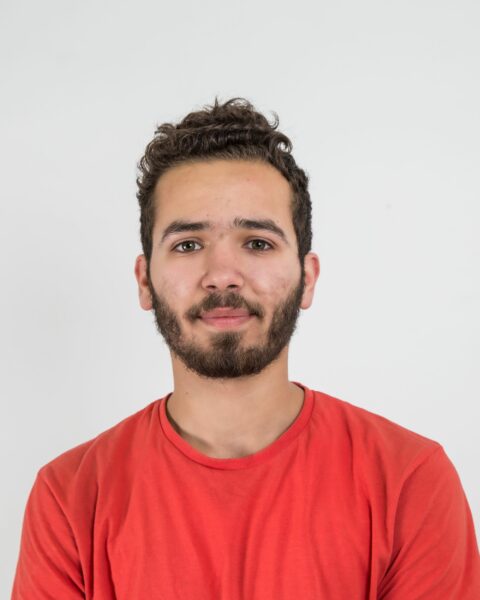Artistic Expression
Expression Artistique
التعبير الفني
Taabir Feniyun
Artistic Pictur
دەربرينی هونەری
कलात्मक अभिव्यक्ति
ስነ-ጥበባዊ መግለጺ
Artistic expressions form our identities.
What we wear, how we wear it and when we wear it can be an expression of our identity. Clothing expresses a story, beginning with who made it or owned it before you.
We can inherit songs, recipes, poems, ceremonies and other symbols of our communities.
For many, artistic expression is complicated in a new country. Traditional materials are hard to get and the climate in Canada makes it hard to translate seasonal celebrations. Straddling identities between back home and Canada can be challenging to navigate.
What traditions of your ancestors are still alive in you? What have you chosen not to continue and why? What tradition would you like to reignite? How might you bridge the old and new?
Les expressions artistiques forment nos identités.
Ce que nous portons, la manière dont nous le portons et le moment où nous le portons peuvent servir à exprimer notre identité. La tenue vestimentaire raconte une histoire, en commençant par la personne qui l’a fabriqué ou qui en a été propriétaire avant nous.
Nous pouvons hériter de chansons, de recettes, de poèmes, de cérémonies et d’autres symboles de nos communautés.
Pour bien des personnes dans un nouveau pays, l’expression artistique, c’est quelque chose de compliqué. Il leur est difficile de se procurer leurs matériaux traditionnels, sans compter qu’au Canada, le climat peut entraver les célébrations saisonnières. Naviguer entre deux identités, soit celle de la patrie et celle du Canada, ce n’est pas chose facile.
Parmi les traditions de vos ancêtres, lesquelles sont toujours présentes chez vous? Lesquelles avez-vous choisi de ne pas perpétuer, et pourquoi? À quelle tradition aimeriez-vous redonner vie? Comment pourriez-vous faire le pont entre l’ancien et le nouveau?
التعبير الفني النابع من هوياتنا .
ما نرتديه، وكيف نرتديه، ومتى نرتديه، يمكن أن يكون تعبيرًا عن شخصيتنا. الملابس تعبر عن قصة، بدءًا بمن صنعها أو امتلكها قبلك.
يمكننا أن نرث الأغاني والوصفات والقصائد والاحتفالات وغيرها من رموز مجتمعاتنا.
بالنسبة للكثيرين، يعد التعبير الفني أمرًا معقدًا في بلد جديد. من الصعب الحصول على المواد التقليدية، كما أن المناخ في كندا يجعل من الصعب ترجمة الاحتفالات الموسمية. قد يكون من الصعب التنقل بين الهويات المتداخلة بين الوطن الام وكندا.
ما هي تقاليد أسلافك التي لا تزال حية فيك؟ ما الذي اخترت عدم الاستمرار فيه ولماذا؟ ما هو التقليد الذي ترغب في إشعاله من جديد؟ كيف يمكنك الربط بين القديم والجديد؟
Altebir alfaniyu yushakil huatina
Sun una libis, Kef nalibis, ayina libis mumkin tabir hiwayat na. Almulabis tuabir al gisa, munu amulu wa bita munu gebilak.
Nakinu mumkin nariz al again, wa al magadir/ wasifat, seir, itifalat, bada ramzi mustamaat na.
Fi muja attebir al feni muagat fi doula ajedida. Almuakta saab ujuta wa manak Canada ja al souba le naek fusul al itifalat.
Alsoubat al mudakila beina bet wa Canada mumkin akun souba ta nak.
Kal altakalit asilaf moujut fi dakila al an? Ija iktir na an lana istamir? Wa lemaja
Ma kia Le tehalit kef ta robut al gedim wa al jedit?
Artistic picture way mak we wudat we be.
Watin, we wear, how we wear am and when we wear am e kin show wudat we be. Close dae tell we story about wudat make am, or wudat get am before you. We grandpa en grandma kin pass den sing dem, den recipe, den poem, den ceremonies and other tin dem to we nar we communities dem.
Boku artistic picture tranga inside new country. Den old tem things -hart for get en dea weather sef nar Canada mak am hart for do we cultural tin dem way we balant do. E hart for do some tin dem way we bin dae do nar we country nar Canada. Whose kind tin dem way wunar ancestors bin dae do way wunar sef dea do now. Watin wunar feel say wunar nor for do en watin do wunar nor want for do am again. Whose tradition wunar go lek for begin again. How wunar go put the old tradition en the new wan
دەربرینی هونەری لە کەسایەتیمانەوە سەرجاوە دەگرێت .
جل و بەرگمان، چۆنی لەبەر دەکەین، وە کەی لەبەری دەکەین.
لەوانەیە ببێتە دەربرینێک کە کەسایەتیمان دەربخات.
چیرۆکەکە کە دەگێرێتەوە کە کێ خاوەنی بو پێش تۆ.
گۆرانی و خواردن و شعر و ئاهەنگمان بۆ دەمێنێتەوە لە باو باپیرانەوە.
بۆ زۆر کەس، دەربرینی هونەری ئالۆزە لە ولاتە نوێ یەکەدا
ماوادە کلتوریەکان بە ئاسان بەدەست نایەت وە کەش و هەواش رێگر دەبێت بۆی بتوانین کارە کلتوریەکان دەربرین لە چاو نیشتماندا.
کام کلتورەی باب و باپیرانت زیندوە تیاتدا ؟
کەمە کلتور ئامادە نیت زیندو بکەیتەوە ،م بۆچی؟
کام کلتورە دەتەویت بێتەوە پێشەوە
چون کۆن و نوی بە یەک دەگەیەنی؟
कलात्मक अभिव्यक्तिले हाम्रो पहिचान बनाउँछ ।
हामी के लगाउँछौं, कसरी लगाउँछौं र कहिले लगाउँछौं भन्ने कुरा हाम्रो पहिचानको अभिव्यक्ति हुन सक्छ । भेषभुषाले एउटा कथा अभिव्यक्त गर्छ, जसको सुरुवात तपाईंभन्दा पहिले कसले बनाएको थियो वा कस्को स्वामित्वमा थियो भन्ने कुराबाट हुन्छ । हामी हाम्रो समुदायका गीतहरू, व्यञ्जन-बिधिहरू, कविताहरू, समारोहहरू र अन्य प्रतीकहरूको उत्तराधिकारी बन्न सक्छौं ।
धेरैका लागि नयाँ देशमा कलात्मक अभिव्यक्ति जटिल छ । सांस्कृतिक-पौराणिक सामग्रीहरू प्राप्त गर्न गाह्रो छ र क्यानाडाको जलवायुले गर्दा मौसमी उत्सवहरू मनाउन गाह्रो बनाउँछ । स्वदेश र क्यानडाबीचका पहिचानहरूलाई संग-सगै लिएर हिड्न चुनौतीपूर्ण हुन सक्छ । तपाईको पुर्खाहरूको कुन परम्परा अझै पनि तपाईमा जीवित छ? तपाईले कुन जारी राख्नु भएन र किन? तपाईं कुन परम्परा पुनःस्थापित गर्न चाहनुहुन्छ? तपाईं कसरी पुरानो र नयाँ परम्परालाई जोड्नु हुन्छ ?
ስነ-ጥበባዊ መግለጺታት መርኣያ መንነትና እዩ።
ኣከዳድናናን ክንክደኖ ኸለናን መግለጺና ኪኸውን ይኽእል እዩ መንነት ፦ ክዳውንትና መን ከም ዝስርሖ ወይ ቅድሜኻ መን ከም ዝወነኖ ኣትሒዙ ናይ ገዛእ ርእሱ ታሪኽ ይገልጽ እዩ ። መዝሙራት ኣሰራርሓ ምግቢ ግጥምታት ጽምብላት ከምኡውን ካልእ ምልክታት ክንወርስ ንኽእል ኢና።
መብዛሕትኡ እዋን ስነ-ጥበባዊ መግለጺ ኣብ ሓዳስ ሃገር ዝተሓላለኸ ክኸውን እዩ። ባህላዊ ንዋት ንምርካብ ኣጸጋሚ እዩ ። ኣብ ካናዳ ዘሎ ክሊማ ድማ ወቕታዊ በዓላት ንምትርጓም ኣጸጋሚ ይገብሮ። ኣብ መንጎ ናይ ሃገሮምን ናይ ካናዳ መንነት ምትሕንፋጽ ን ምእላይ በዳሂ ክኸውን ይኽእል እዩ። እንታይ ትውፊት ናይ ኣቦታትካ ክሳብ ሕጂ ኣባኻ ዘሎ? እንታይ ምሳኻ ክይቅጽል መሪጽካ ፧ ስለምንታይከ ፧ ኣየናይ ትውፊት ዳግማይ ከተ ቀጻጽሎ ትደሊ? ነቲ ኣረጊትን ሓድሽን ብኸመይ ከተ ራኽቦ ትኽእል፧
Artistic Expression
Expression Artistique
التعبير الفني
Taabir Feniyun
Artistic Pictur
دەربرینی هونەری
कलात्मक अभिव्यक्ति
ስነ-ጥበባዊ መግለጺ
- Traditions, customs, forms of artistic expression from generations before us evolve in many different ways.
- What do you hold on to?
- What have you let go of?
- Why?
- How might you transition from feeling potential shame to feeling a deep sense of pride in your culturally informed artistic expression(s)?
- Les traditions, les coutumes et les formes d’expression artistique des générations précédentes évoluent de bien des façons.
- À quoi tenez-vous?
- Qu’avez-vous laissé tomber?
- Pourquoi?
- Vous arrive-t-il de ressentir de la honte pour votre expression artistique?
- تتطور التقاليد والعادات وأشكال التعبير الفني من الأجيال التي سبقتنا بطرق عديدة ومختلفة.
- ما الذي تتمسك به؟
- ما الذي تركته؟
- لماذا؟
- كيف يمكنك الانتقال من الشعور بالخجل المحتمل إلى الشعور العميق بالفخر بتعبيراتك الفنية المستنيرة ثقافياً؟
- Altaqalid waltakalif wal’ askal idha shakal altaebir alfaniyu. Laqad tatawar aljil alsaabiq bieidat turuq mukhtalifatin
- Madha tatamasak bihi?
- Ma aladhi taraktu limadha?
- Limadha?
- Kef yumkinuk aliantiqal min alshueur bialkhajal almutamal ‘iilaa alshueur bi iihsas eamiq bi al fakhir bitae biratik alfaniyat almustanirat thqafyan?
- Traditions, customs en kind of pictur artist from dea wan den way bin don dea before we change boku boku ways.
- Watin, you hold par?
- Watin, you don lef?
- Watin do?
- How you dea able comot from dea way wae you kin feel shame en you kin feel proud of you culture in you pictur artistics dem?
- كەلتور و داب و نەریتی نەوەکانی پێشی ئێمە هەمیشە لە گۆڕان و جوڵە دایە
- چ داب و نەریت و کەلتورەک دەتەوی بپارێزی ؟
- چ داب و نەریتەک دەتەوێ واز لێ بینی ،؟
- وە بۆ ؟
- چۆن دەتوانی لە هەست کردنەکی قوڵی پڕ شەرمەزاری بچیە هەستکردنەکی پڕ لە شانازی ڕێگای دەربڕینی ڕۆشەنبیری و هونەری کەلتورەکەت ؟
- परम्परा, रीतिरिवाज, र कलात्मक अभिव्यक्तिका रूपहरू हामी भन्दा पहिलेका पुस्ताहरूबाट धेरै फरक तरिकाले विकसित भएका छन् ।
- तपाई के मा अडिनु भएको छ?
- तपाईले के छोड्नुभयो? किन?
- तपाईं आफ्नो सांस्कृतिक रूपमा सूचित कलात्मक अभिव्यक्ति(हरू) मा सम्भावित लाजको अनुभवबाट गहिरो गर्वको भावनामा कसरी परिवर्तन गर्न सक्नुहुन्छ?
- ካብ ቅድሜና ዝነበሩ ወለዶታት ዝተፈላለዩ ልምድታት፡ ወዕግታት ፡ ብመልክዕ ስነ-ጥበባዊ መግለጺን ፡ ብብዙሕ ዝተፈላለየ መንገዲ እዩ እናማዕበለ መጺኡ ።
- ካብኡ እንታይ ዓቂብካ?
- ካብኡ እንታይ ገዲፍካ?
- ንምንታይ፧
- ካብቲ ከሕፍረካ ዝኽእል ዓሚቕ ስምዒት ፣ ብስነ-በባዊ ክእለት ብምግላጽ ክትኮርዕ’ዶ ትኽእል፧










